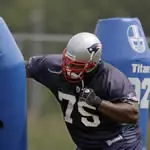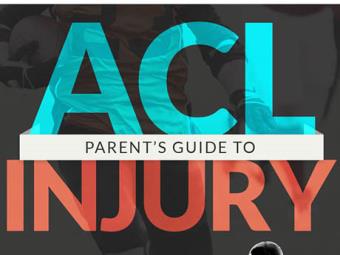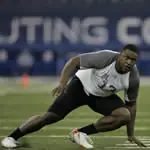
It's unfortunate, but too little time is devoted to proper technique and strategy when coaching defensive linemen in youth football. Success at the point of attack is critical to developing a dominating defense. As a football coach, there are but a few simple things you can do to improve the play of your defensive linemen.
The goal of the defensive lineman is to control an area along the line of scrimmage. Usually this area is the blocker and the gap on each side of the blocker. Depending on the speed, size, and athletic ability of the offensive lineman, responsibilities may vary. Against some linemen, a defensive lineman may be responsible for only one gap, which is called "gap control". By over-shifting or under-shifting, a defensive lineman's gap will change based on the defensive scheme that is called. You can find much more information on tips, strategies and coaching techniques by visiting my web site at CoachT.tv and ordering my DVD Series.
Assessing your Linemen
A skilled defensive lineman will possess several traits that are vital to his success in exploiting weaknesses of the offensive linemen. The seven things to look for are:
- A quick first step.
- A good, quick initial move.
- Turning the opponent's shoulders.
- A quick counter move.
- The ability to make opponents "lose their feet" and to get opponents off-balance.
- The ability to cause opponents to lunge and miss.
- The skill to use their hands quicker than the opponent's hands
Moves of the Defensive Linemen
In youth football it is most effective to teach the bull rush, the push/pull and the rip technique with a spin move as the second part of a combination. Here are these techniques in greater detail.
Bull Rush: If the blocker has his weight on his heels, it's ideal to use the bull rush. The bull rush is effective maybe 10 percent of the time and usually only when the blocker is on his heels. The defender charges hard. He then punches the heels of his hands into the outside of the chest or under the armpits of the blocker. His legs drive hard as he pushes the blocker into the passer. This is especially effective if the defender has a size or leverage advantage.
The Rip: In the rip or pin-and-rip technique, the defender slaps and pins the blocker's arm with one arm. The defender drives his far arm with a hard rip under the near arm of the blocker. If the defender is going to his right, he hooks his left arm under the left shoulder of the blocker, lifting the shoulder with the charge. When doing the rip move, stay low at contact--use speed and quickness to your benefit.
The Push-Pull: In those instances where the defender senses the offensive lineman putting more of his weight in front of him or that he is lunging, the defender should use a push and pull technique. The push/pull is much like the bull rush, except at a point within the rush, the defender lets up, causing the offensive lineman's forward momentum to push him forward. The defender can just pull him down.
The defensive lineman should read draw or screen when setting up a push/pull. You don't want to get caught on the pull going the wrong way.
The Spin Move: The spin move is demonstrated in this next part. Remember to emphasize that the defensive lineman should maintain a low center of gravity. The quicker the spin, the better the result.
Combination Attacks
A defensive lineman can't be a one-hit wonder as far as moves are concerned. It's equivalent to a boxing match in deciding what your move is going to be, how the offensive lineman reacts, and how you'll counter that move. What if the rip doesn't work--do you go to a spin? In a bull rush, when do you decide to do a push/pull?
On the other hand, when developing a good counter move, you first have to have an initial move that you have perfected. A counter move isn't effective without establishing that initial move. Becoming proficient with your first move is more important than the counter. Without that strong first move, you can't have a successful counter.
Fight Through the Pressure
When the defensive lineman feels the blocker, he needs to make a quick read. He must fight through the pressure and not go back door. Teaching youth defensive linemen this skill is something they will be able to utilize for the rest of their career.
A Final Note
Finally, the most important trait of a D-lineman is unrelenting effort. Stress to your defensive linemen to keep at it and never give up. Don't ever give the offensive lineman the satisfaction of you being on the ground--do what ever you have to do to let them know their job will never be done.
 Find a football team, camp or league near you.
Find a football team, camp or league near you.Thad Tumbleson, or "Coach T" as he is better known, runs a successful summer youth football camp in which the kids learn not only how to become better football players, but better people. Coach T has created a popular 10-set DVD series, "Coach T Tackles Football". The DVDs explore numerous drills, strategies, up-to-date techniques and approaches, safety tips, sports medicine and provides in-depth positional analysis. Visit his web site at www.coacht.tv for more information about his camps and DVD Series.







Discuss This Article